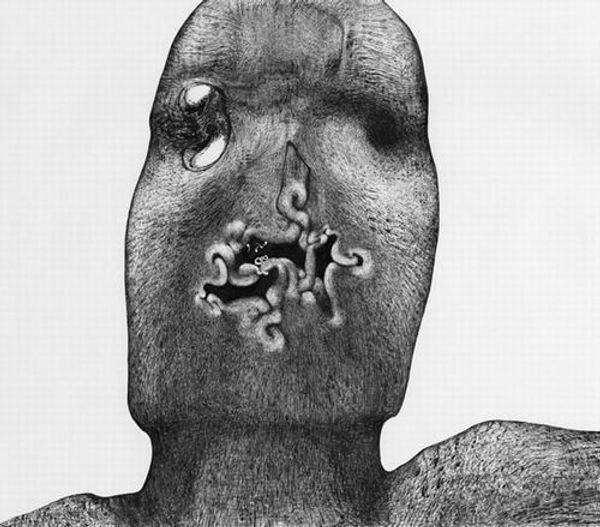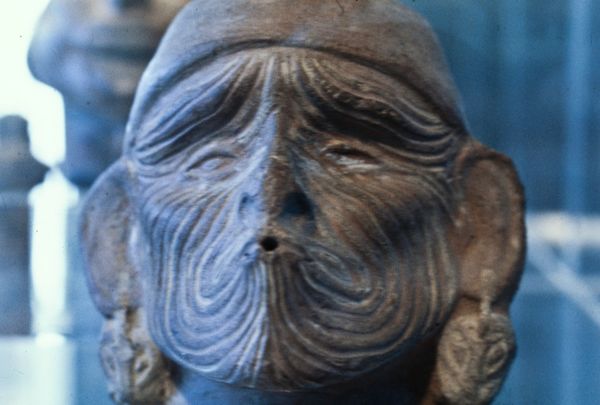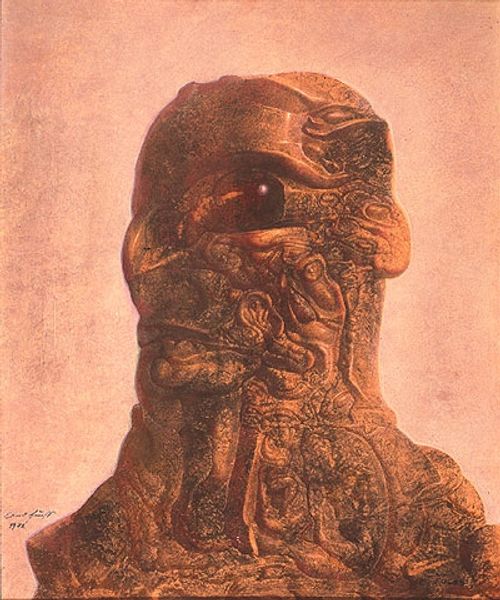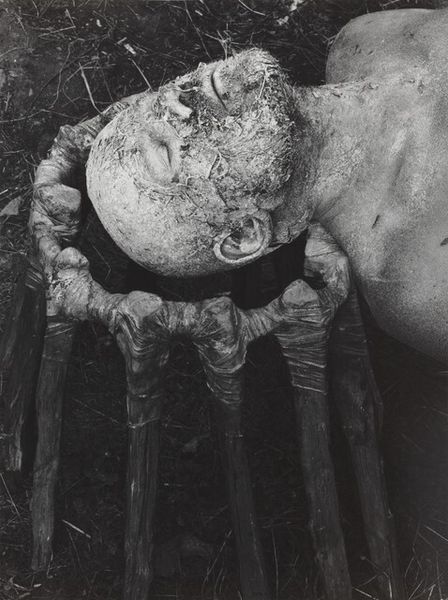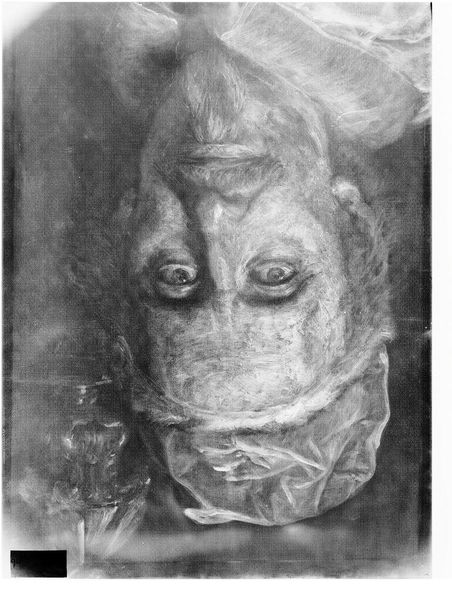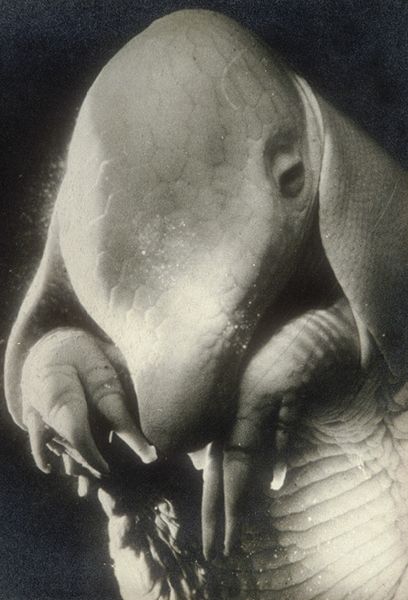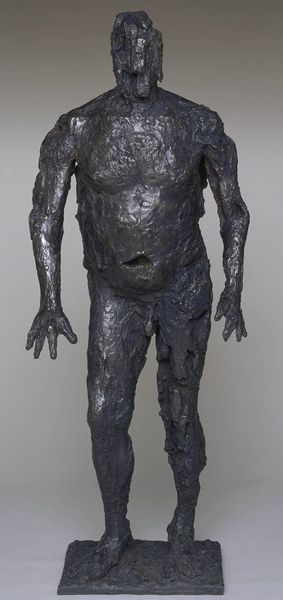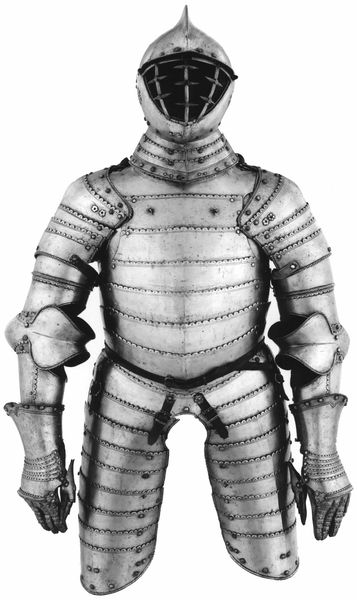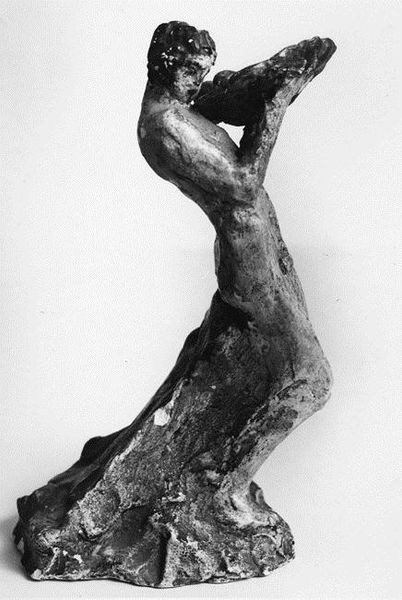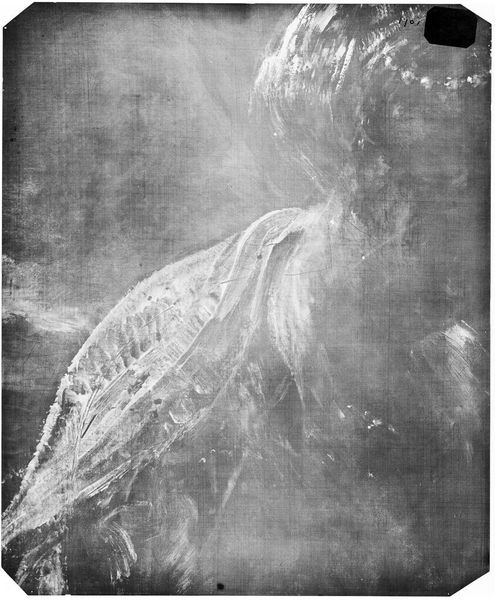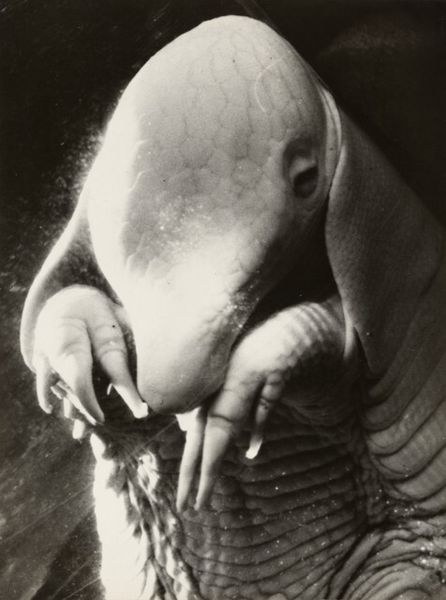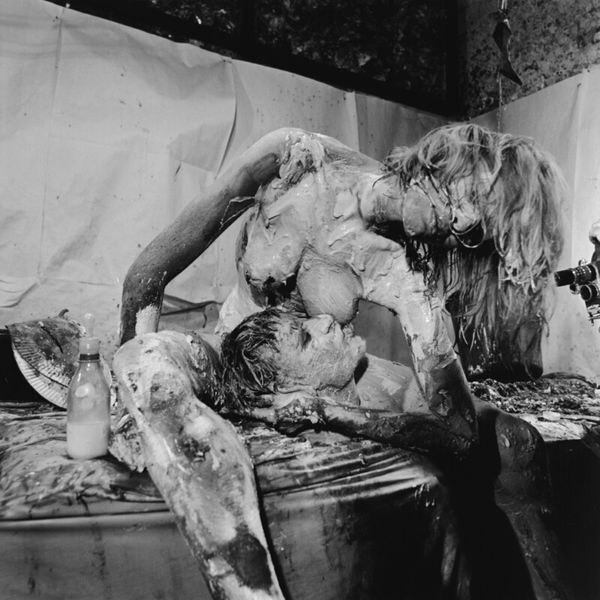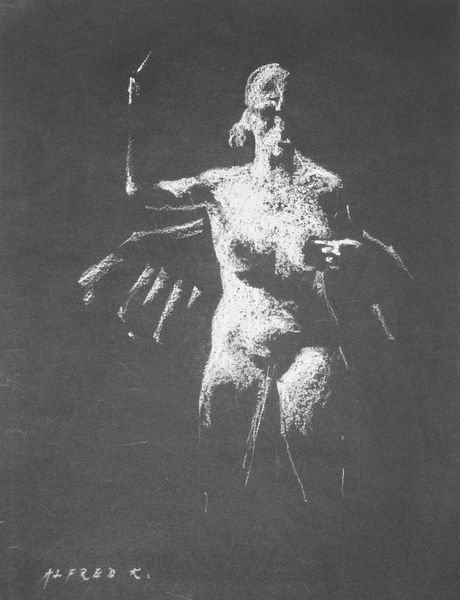
mixed-media, photography, sculpture
#
mixed-media
#
sculpture
#
figuration
#
photography
#
black and white theme
#
sculpture
#
monochrome
#
modernism
#
monochrome
Copyright: Alina Szapocznikow,Fair Use
Curator: This is Alina Szapocznikow's "Head III," created in 1960. What are your initial thoughts? Editor: Visually, it strikes me as a study in textures. The smooth, almost molten form of the head sharply contrasts with those rough, protruding elements that seem almost violently applied. I wonder about the physical process that led to this juxtaposition. Curator: Indeed, and that contrast speaks to the social tensions Szapocznikow was exploring in her work at the time. As a survivor of the Holocaust, she was acutely aware of the body's fragility and the lasting scars of trauma, both physical and psychological. Editor: The materials and how they’re worked are everything here, aren’t they? I mean, the mixed media she employs--sculpture and photography in monochrome--amplifies this raw, almost brutal quality. It's not about idealized beauty; it’s about confronting something…uncomfortable. Curator: Precisely. Szapocznikow challenged the conventions of traditional sculpture, which had typically been dominated by male artists celebrating strength and power. This head isn't powerful in a conventional sense. It’s vulnerable, almost wounded. The monochrome image enhances this, stripping away color, emphasizing form and texture, as you noted. This makes it far more emotionally immediate for the viewer. Editor: There's a tension between creation and destruction. I keep thinking about how much force and pressure she must have exerted when building it, adding those textural elements, nearly attacking the initial smooth head structure in doing so. Is she working through a specific societal anxiety? Curator: Very much so. Consider the broader context. The 1960s were a period of profound social and political change. Artists like Szapocznikow were responding to the anxieties of the Cold War, the threat of nuclear annihilation, and questioning traditional values. This head becomes a kind of emblem for these wider fears and uncertainties. It reflects what that epoch represented in all of its stark horror, and how that can manifest in the abject body. Editor: It does invite introspection, this piece. It pulls the observer toward themes such as labor and material and how they are ultimately handled and portrayed for all to observe, for the society itself to confront in that instant. It goes against traditional views, indeed. Curator: Yes, seeing this, I'm reminded that art can hold a mirror up to society. It reminds us of our own vulnerabilities and prompts reflection on collective history. Editor: I agree. This exploration of process has given me much to consider.
Comments
No comments
Be the first to comment and join the conversation on the ultimate creative platform.
